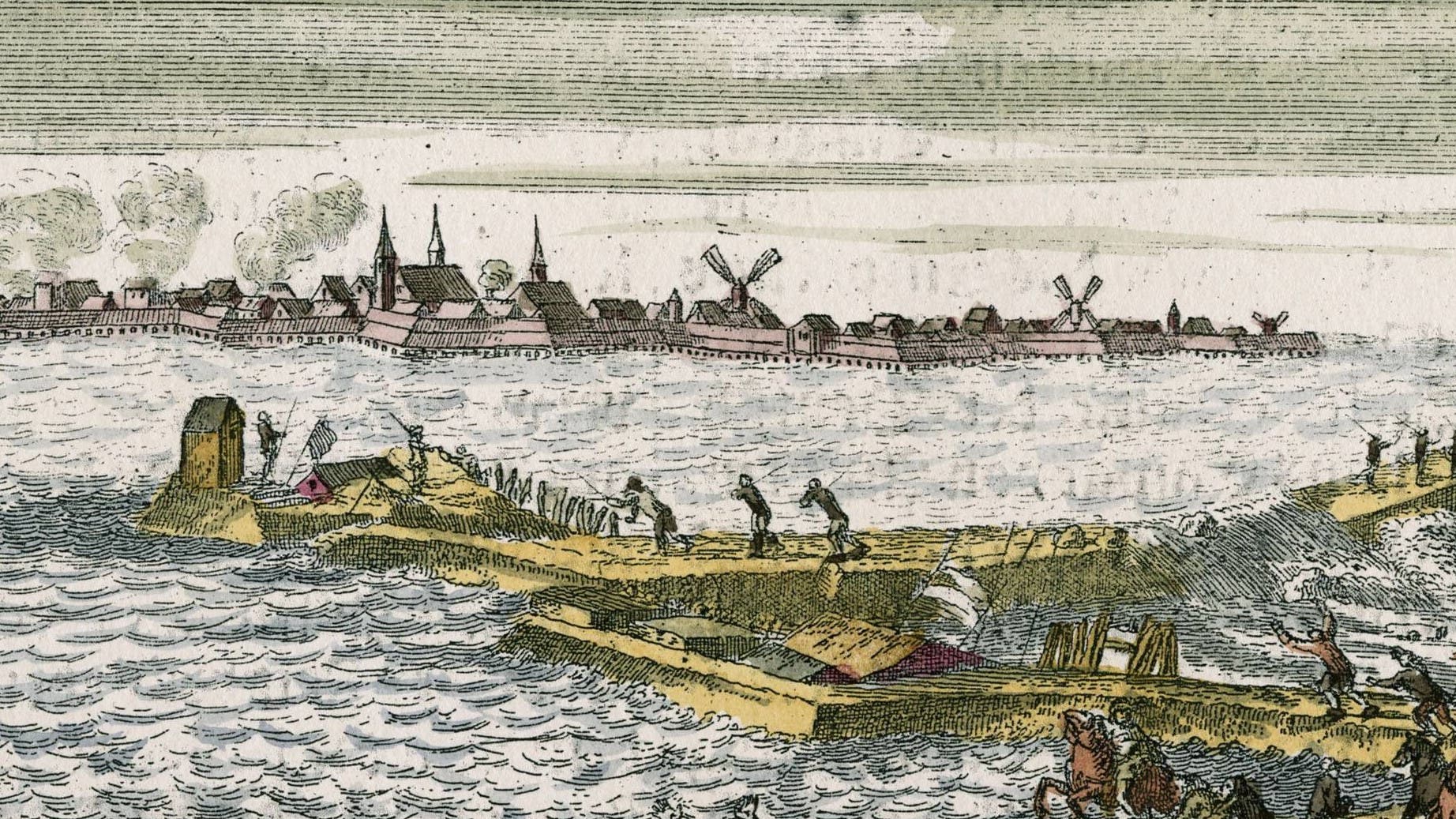Core Concepts
The author highlights the catastrophic consequences of the Magdalene flood in the Middle Ages, emphasizing the erosion of fertile land and subsequent societal impacts.
Abstract
The Magdalene flood of the Middle Ages caused severe soil erosion, leading to abandoned settlements like Drudewenshusen and Winnefeld. The aftermath included food shortages, regulatory measures, and constructive initiatives for flood protection. Historical events like this serve as a reminder to consider past disasters in modern risk assessments.
Magdalenenflut: Als das Mittelalter den Boden unter den Füßen verlor
Stats
"Die hier gefundene Keramik datierte der Mittelalterarchäologe Hans-Georg Stephan von der Universität Halle-Wittenberg zwischen 1310 und 1340."
"an den zahlreichen Standorten in den deutschen Mittelgebirgen, an denen seit 1342 steinreiche Schuttdecken an der Oberfläche liegen, werde erst in etwa 100 000 Jahren wieder ertragreicher Ackerbau möglich sein"
"Im Herbst und Winter 1343/44 wurden »in vielen Gegenden Deutschlands« Menschen »von des Hungers Stachel gequält."
Quotes
"We müssen wieder lernen, diese Hochwassersituationen ernster zu nehmen." - Rüdiger Glaser
Key Insights Distilled From
by Der Autor Is... at www.spektrum.de 03-04-2024
https://www.spektrum.de/news/magdalenenflut-als-das-mittelalter-den-boden-unter-den-fuessen-verlor/2148510
Deeper Inquiries
How did the societal response to the Magdalene flood shape future disaster preparedness?
The societal response to the Magdalene flood played a crucial role in shaping future disaster preparedness measures. In the aftermath of the catastrophe, communities focused on rebuilding their cities and implementing strategies for better flood protection. Initiatives such as regulating prices of essential goods, storing provisions, and constructing levees and dams were put into place to mitigate similar disasters in the future. The involvement of authorities like Emperor Ludwig der Bayer in supporting flood control efforts set a precedent for governmental intervention in disaster management.
These early responses laid the foundation for modern approaches to disaster preparedness by highlighting the importance of proactive planning, community resilience, and infrastructure development. The lessons learned from the Magdalene flood emphasized the need for coordinated efforts between government agencies, local communities, and scientific experts to effectively respond to natural disasters. Overall, this historical event served as a catalyst for advancing policies and practices aimed at reducing vulnerability to extreme weather events.
What are potential drawbacks of relying solely on historical data for modern risk assessments?
While historical data can provide valuable insights into past events and trends, relying solely on it for modern risk assessments has certain limitations. One drawback is that historical records may not capture all possible scenarios or account for changing environmental conditions due to factors like climate change or urbanization. This could lead to an underestimation of risks or inadequate preparation for new types of hazards.
Additionally, historical data may be incomplete or inaccurate, especially when dealing with ancient events where documentation was limited. This can result in gaps in understanding potential risks and vulnerabilities in contemporary settings. Moreover, extrapolating findings from past occurrences without considering current socio-economic dynamics could lead to ineffective risk mitigation strategies that do not address present-day challenges adequately.
To overcome these drawbacks, it is essential to complement historical data with up-to-date information from scientific research, modeling techniques, and real-time monitoring systems. By integrating multiple sources of data into risk assessment processes, decision-makers can gain a more comprehensive understanding of potential threats and develop adaptive strategies that account for both past experiences and emerging trends.
How can lessons from medieval catastrophes inform sustainable urban planning today?
Lessons learned from medieval catastrophes offer valuable insights that can inform sustainable urban planning practices today. The impact of events like the Magdalene flood underscores the importance of considering environmental risks when designing cities and infrastructure systems. By studying how past societies coped with natural disasters through land use regulations, water management schemes,
and community-based initiatives,
modern urban planners can incorporate similar principles into contemporary city planning frameworks.
For example,
prioritizing green spaces,
implementing stormwater management solutions,
and promoting mixed land-use developments
can help reduce vulnerability
to floods
and enhance overall resilience
against climate-related hazards.
Furthermore,
the emphasis on adaptive governance structures
and participatory decision-making processes
observed after medieval catastrophes highlights
the significance
of engaging diverse stakeholders
in urban planning efforts.
By fostering collaboration between policymakers,
scientists,
residents,
and businesses,
cities can develop holistic strategies
that balance economic growth with environmental sustainability
and social equity.
0
